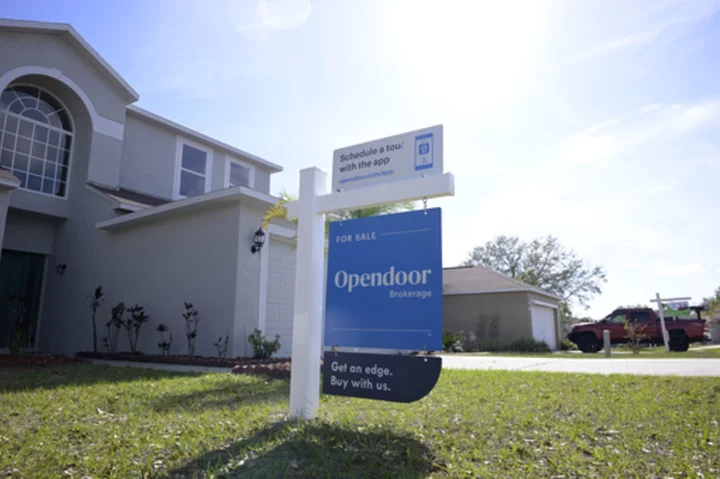LOS ANGELES (AP) — A persistently low inventory of homes on the market held back U.S. home sales again in April, even as the national median sale price posted its biggest annual drop in 11 years.
Existing home sales fell 3.4% in April from March to a seasonally adjusted annual rate of 4.28 million, the National Association of Realtors said Thursday. That’s slightly below what economists were expecting, according to FactSet.
Sales sank 23.2% compared with April last year. The annual drop was steepest in markets across the Western part of the country, where sales plunged more than 30% from a year earlier.
The national median home price slipped 1.7% from April last year to $388,800, the NAR said. While modest, the year-over-year decline is the biggest since January 2012, the tail end of a a multiyear slide in home prices after the mid-2000s housing bubble burst.
The latest housing market figures are more evidence that even with prices easing back after rising for more than a decade many would-be homebuyers remain frustrated by a stubbornly low supply of homes for sale and elevated borrowing costs.
“We have a very strange dynamic," said Lawrence Yun, the NAR’s chief economist. "Sales are down, even prices are down, yet multiple offers are happening on at least one-third of the properties (that) have been sold above their list price.”
The U.S. housing market has yet to emerge from a slump that started a little more than a year ago, when the average rate on a 30-year mortgage began to climb from ultra-low levels, eventually doubling to just over 7% by the fall. When mortgage rates rise they can add hundreds of dollars a month in costs for homebuyers on top of already high home prices.
That benchmark home loan rate tends to track the moves in the 10-year Treasury yield, which rose sharply last year as bond investors reacted to the Federal Reserve aggressively hiking its main borrowing rate -- the central bank’s main tool against four-decade high inflation.
The average rate on a 30-year mortgage climbed to 6.7% in early March, which likely hurt sales in April, as a lag of a month or two usually exists between a signed contract and a completed home sale.
Mortgage rates have mostly edged lower since that early March spike, hovering around 6.3%. That’s still around 1.5% higher than a year ago.
“Right now, home sales are just bouncing a little higher or a little lower, depending upon the movement of the mortgage rates,” said Yun.
The elevated rates and low for-sale inventory have forced many would-be homebuyers to the sidelines during the past year, resulting in a lackluster start to the spring homebuying season.
Through the first four months of 2023, existing home sales are running about 27% below the pace in the same stretch last year. Sales are down 33% from their most recent peak in January 2022, the NAR said.
The shortage of homes for sale has kept the market competitive, driving bidding wars in many places, especially for the most affordable homes.
The combination of high borrowing costs and intense competition for the most affordable homes on the market is keeping many first-time buyers on the sidelines. They accounted for 29% of home sales last month, up from 28% in March.
All told, there were 1.04 million homes on the market by the end of April, up 7.2% from the previous month and up 1% from April last year, the NAR said. That's still well below pre-pandemic levels. Consider, in April 2019 there were 1.8 million homes on the market.
That amounts to a 2.9-month supply at the current sales pace, an improvement over the 2.6-months in March and 2.2 months a year ago. Still, in a more balanced market between buyers and sellers, there is a 5- to 6-month supply.
“If we had more inventory more sales could get done,” Yun said.

